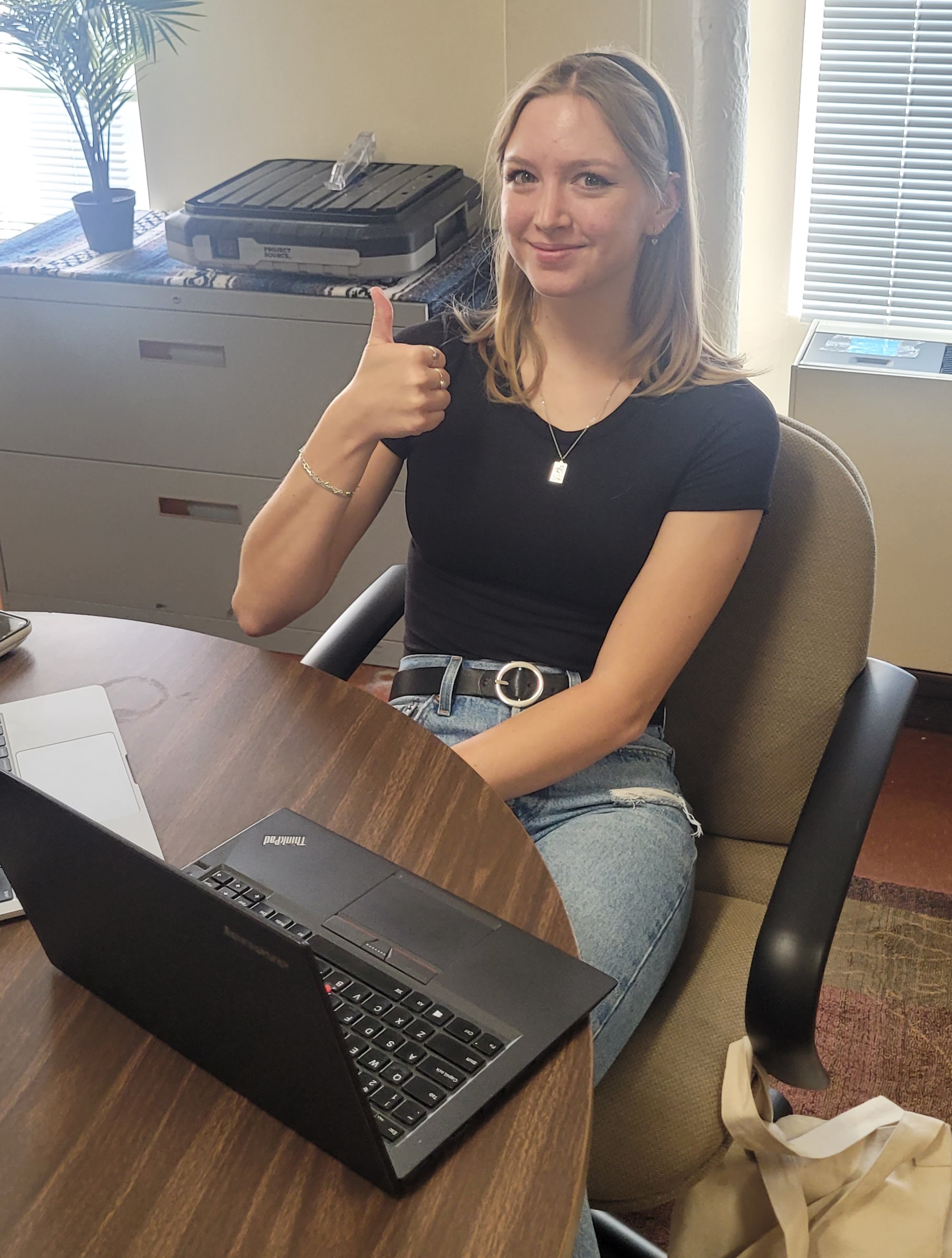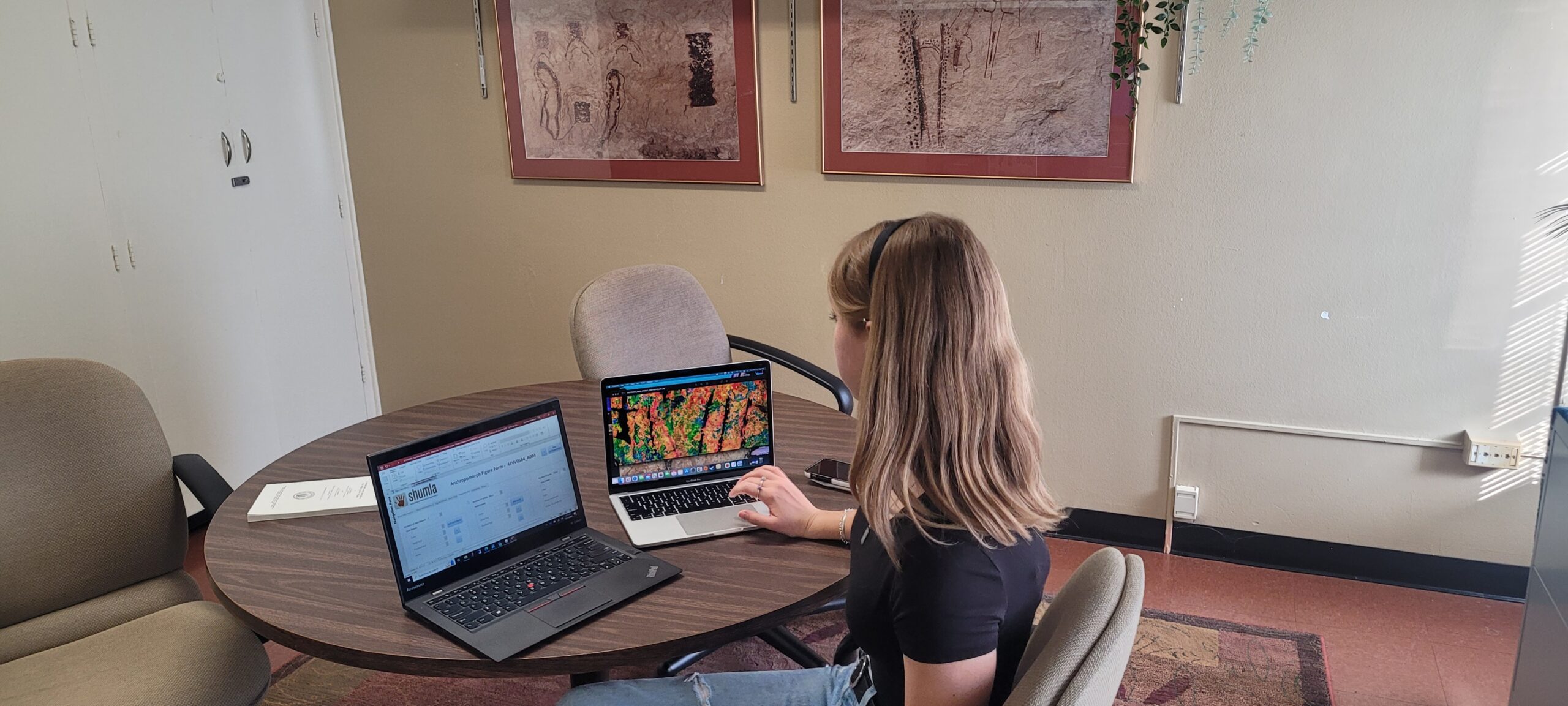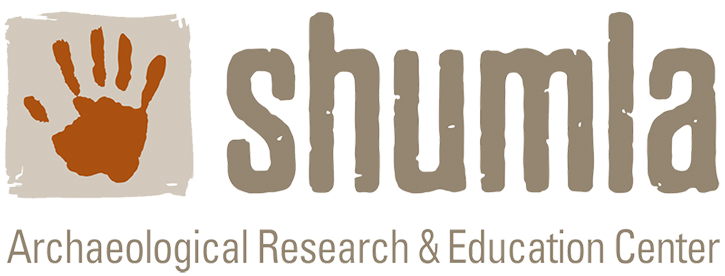Shumla Volunteer Blog: Chloe Bluemel
Hi! I’m Chloe Bluemel. I’ve been volunteering at Shumla Since July 24, 2023. During my time, I have analyzed the anthropomorphs depicted on the walls of Jaguar Shelter, writing extensive descriptions, and entering them into the Shumla database.
About Me
I am currently in my senior year studying Anthropology with a minor in Geology at Texas State University. I’m hoping to work in archaeology, and I am primarily interested in iconography and bioarchaeology. I became interested in archaeology because my family is involved in keeping our native culture alive, and I realized that so much could be missing. Being in the Chickasaw tribe, I have grown up learning Southeastern stories and participating in the culture, songs, and stomp dance. Being able to reference my own native culture into one that’s about a thousand miles away is an amazing opportunity to see the differences and similarities of different native cultures.

My Experience with Shumla
I was introduced to Shumla at a seminar a year before I started volunteering with them. Just hearing about the different figures that are decorated on the walls, how they would have been painted, and what each figure could represent struck up an interest in me. When I was offered an opportunity to volunteer, I was so excited. Working with Siobhan Anderson introduced me to the database and how to use it. Siobhan familiarized me with key features in the figures and how to best write about them. She showed me how to describe the anthropomorphs in Jaguar Shelter, including closely examining their appearance, identifying specific attributes and paraphernalia, and putting each figure into its larger context on the panel. Sometimes, we could discuss what things may represent, which I enjoyed greatly. Overall, the people on the Shumla team are all so nice and passionate about the art they get to study.

Data Base Descriptions
In my time with Shumla, my goal has been to log the anthropomorphs of Jaguar Shelter into Shumla’s 150+ figure attribute database. I identify the details of each figure such as its paraphernalia, composition, and colors. After the basics are logged, I write about every noticeable detail within the anthropomorph. I get to relate how the paintings interact and surround the figure as well. Describing the figures is very interesting because I see new details every time I look at them. All of the figures are doing something different, surrounded by different things, and each is unique in their own way. When recording, I also discussed the test results from fieldwork completed asa part of the Hearthstone project and what they entailed. These descriptions includedwhere radiocarbon samples were taken, microscopic images that werecaptured, the estimated ages of the art, and what order the paint was layered onthe shelter walls. Learning about the Shumla method for understanding rock art has been very cool!
Conclusion
My time with Shumla has led me to want to learn and analyze iconography more than originally thought. Learning how to precisely describe features has also come in handy in my schoolwork, and i hope to use these skills in future projects. The people who work within the program and study the rock art are all wonderful and excited with every piece of the Pecos River art they see. Overall, my time with Shumla has benefitted me greatly in knowledge and hands-on experience. I thank Shumla and Siobhan for inviting me to broaden my understanding of iconography and the Pecos River art style!
